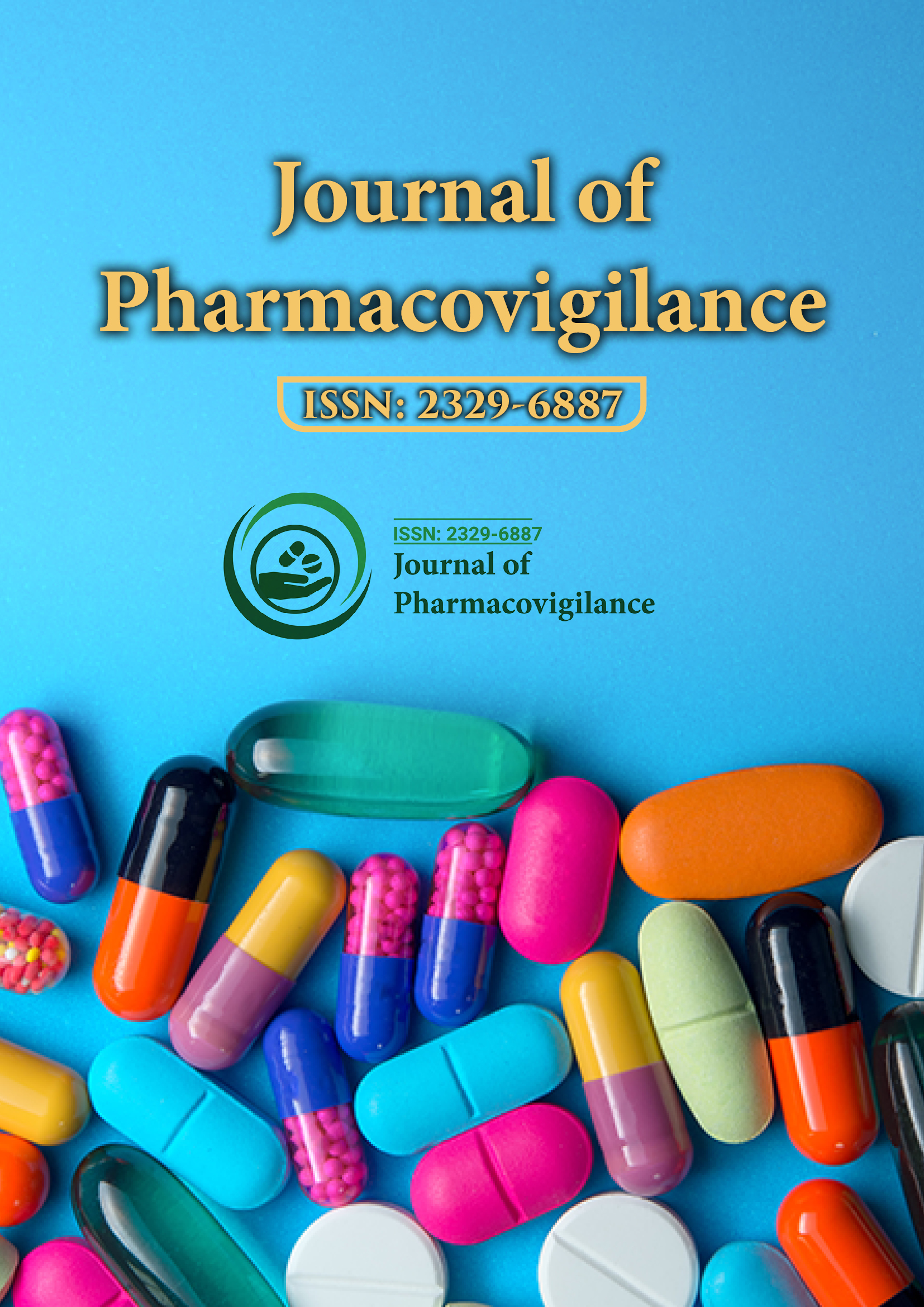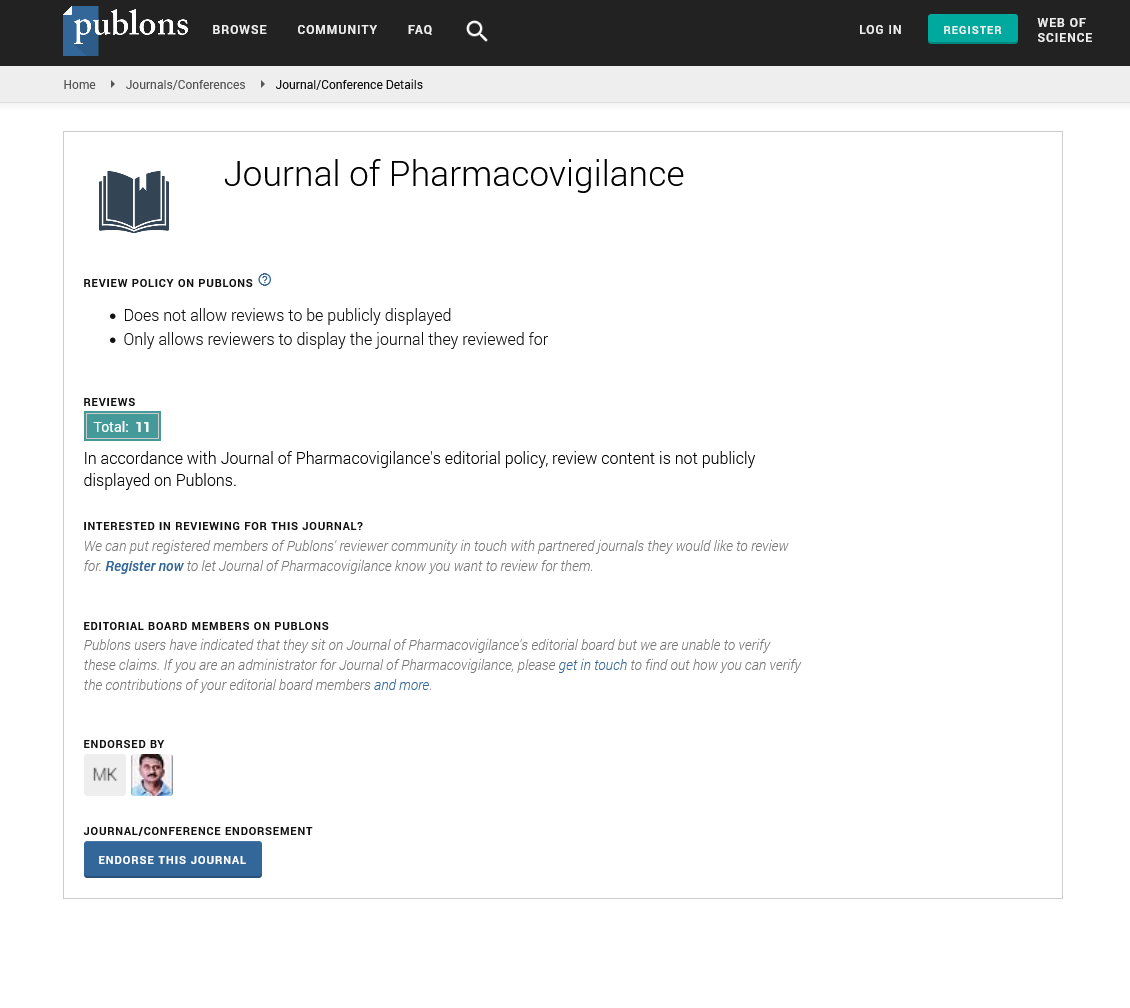Indexed In
- Open J Gate
- JournalTOCs
- The Global Impact Factor (GIF)
- RefSeek
- Hamdard University
- EBSCO A-Z
- OCLC- WorldCat
- Publons
- Euro Pub
- Google Scholar
Useful Links
Share This Page
Journal Flyer

Open Access Journals
- Agri and Aquaculture
- Biochemistry
- Bioinformatics & Systems Biology
- Business & Management
- Chemistry
- Clinical Sciences
- Engineering
- Food & Nutrition
- General Science
- Genetics & Molecular Biology
- Immunology & Microbiology
- Medical Sciences
- Neuroscience & Psychology
- Nursing & Health Care
- Pharmaceutical Sciences
Perspective - (2024) Volume 12, Issue 4
Enhancing Patient Safety in Psychotropic Medication Use: Adverse Drug Reactions in Antidepressant and Antipsychotic Therapies
Giovanna Nora*Received: 20-Nov-2024, Manuscript No. JP-24-28263; Editor assigned: 22-Nov-2024, Pre QC No. JP-24-28263 (PQ); Reviewed: 10-Dec-2024, QC No. JP-24-28263; Revised: 17-Dec-2024, Manuscript No. JP-24-28263 (R); Published: 24-Dec-2024, DOI: 10.35248/2329-6887.24.12.499
About the Study
Mental health conditions affect millions worldwide and pharmacotherapy plays a key role in their management. While antidepressants and antipsychotics offer significant therapeutic benefits, they are not without risks. Pharmacovigilance, the science and activities relating to the detection, assessment, understanding and prevention of Adverse Drug Reactions (ADRs), is essential in ensuring the safe and effective use of these medications. This essay will explore the unique challenges of pharmacovigilance in mental health, focusing on antidepressants and antipsychotics. One of the primary challenges in pharmacovigilance for mental health medications is the complex nature of ADRs. Unlike many physical illnesses, mental health conditions often present with vague and subjective symptoms. This can make it difficult to distinguish between ADRs and the underlying illness or other comorbidities. For example, fatigue, insomnia and anxiety can be symptoms of depression, but they can also be side effects of certain antidepressants. This ambiguity can lead to underreporting of ADRs, hindering efforts to identify and mitigate safety risks. Another challenge is the high prevalence of polypharmacy in mental health. Patients with mental health conditions often have multiple comorbidities, leading to the use of multiple medications, including antidepressants, antipsychotics and other psychotropics. This increases the risk of drug interactions and complex ADRs. Monitoring and managing these interactions require a comprehensive understanding of each medication's potential side effects and interactions with others. The stigma surrounding mental illness also poses a significant challenge to pharmacovigilance. Patients may be reluctant to report ADRs due to fear of judgment or concerns about treatment discontinuation. Healthcare providers may also be hesitant to report ADRs due to concerns about patient confidentiality or legal repercussions. Addressing this stigma requires a multi-pronged approach, including education campaigns, patient advocacy and the development of confidential reporting systems.
Specific to antidepressants, one of the major safety concerns is the risk of serotonin syndrome. This potentially life-threatening condition occurs when there is too much serotonin in the body, often due to the combined use of multiple serotonergic medications. Symptoms can include agitation, confusion, fever, muscle rigidity and seizures. Close monitoring and careful medication selection are essential to prevent this serious ADR. Another important safety consideration for antidepressants is the risk of withdrawal symptoms upon discontinuation. Abrupt cessation of these medications, especially selective Serotonin Reuptake Inhibitors (SSRIs), can lead to a range of symptoms, including dizziness, headache, nausea and anxiety. Gradual tapering of the medication dose is essential to minimize withdrawal effects and ensure a smooth transition. Antipsychotics also carry their own set of safety challenges. Extrapyramidal Symptoms (EPS), such as akathisia, dystonia and parkinsonism, are common side effects of first-generation antipsychotics. These symptoms can significantly impact a patient's quality of life and adherence to treatment. Newer atypical antipsychotics have a lower risk of EPS but can carry a higher risk of metabolic side effects, such as weight gain, dyslipidemia and diabetes. Another serious concern with antipsychotics is the risk of tardive dyskinesia, a potentially irreversible movement disorder characterized by involuntary movements of the face, tongue and limbs. This risk increases with longer duration of treatment and higher doses. Regular monitoring for the development of tardive dyskinesia is important and treatment options may need to be adjusted if it occurs.
Conclusion
Despite these challenges, significant strides have been made in pharmacovigilance for mental health medications. The development of sophisticated data analysis techniques, such as data mining and machine learning, has enabled the identification of previously unrecognized ADRs and safety signals. Real-world data from electronic health records and other sources can also provide valuable insights into medication safety and effectiveness in diverse populations. The role of healthcare providers is also essential in improving pharmacovigilance. Regular patient assessments, including monitoring for ADRs and adherence to treatment, are essential. Healthcare providers should also be aware of the latest safety information and guidelines for the use of mental health medications. Open communication with patients about potential risks and benefits is also critical to ensure informed decision-making.
Citation: Nora G (2024). Enhancing Patient Safety in Psychotropic Medication Use: Adverse Drug Reactions in Antidepressant and Antipsychotic Therapies. J Pharmacovigil. 12:499.
Copyright: © 2024 Nora G. This is an open-access article distributed under the terms of the Creative Commons Attribution License, which permits unrestricted use, distribution, and reproduction in any medium, provided the original author and source are credited.

